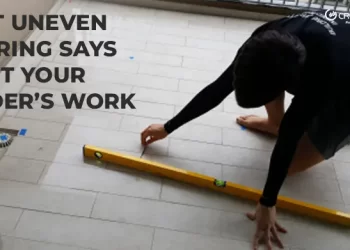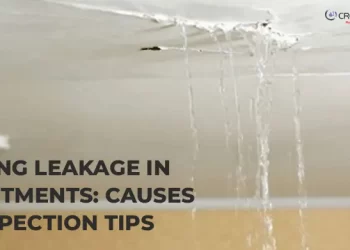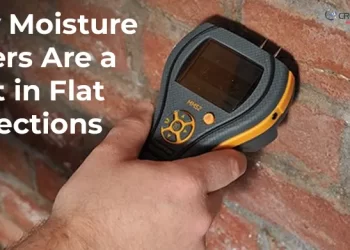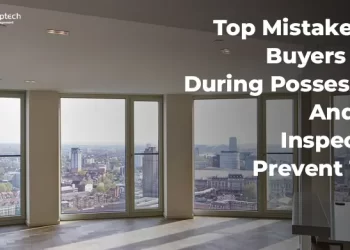When purchasing or residing in an older property in India, identifying potential defects is essential to safeguard your investment and ensure a safe living environment.
Old buildings often carry the charm of heritage but also come with a range of structural, electrical, and maintenance issues.
A professional home inspection can help uncover these problems, enabling you to take corrective actions before it’s too late.
This blog provides an in-depth guide to identifying defects in old buildings and understanding how a home inspection can make a difference.
Why Inspecting Old Buildings is Crucial
Old buildings are more susceptible to wear and tear due to prolonged exposure to environmental conditions, poor maintenance, and ageing construction materials.
Defects in such buildings not only compromise safety but also lower their market value.
Timely inspections allow homeowners and potential buyers to address hidden issues, negotiate costs, and maintain the property’s longevity.
Dampness, Seepage, and Leakage
Indian homes, particularly in tropical climates, are prone to dampness due to prolonged exposure to rain and humidity.
Common signs include:
- Damp Patches: Visible on walls and ceilings, often bloating over time.
- Salt Damage: Occurs due to soluble salts penetrating the building materials, especially in older constructions lacking horizontal waterproofing.
- Plaster Damage: Prolonged seepage causes the plaster to peel off and weakens the wall structure.
A professional home inspection uses advanced tools like thermal imaging to detect moisture levels and pinpoint the source of dampness, ensuring precise and effective repair.
Electrical Issues
Older buildings are often equipped with outdated electrical wiring and panels, leading to safety hazards.
Key issues include:
- Flickering lights or frequent fuse blowouts.
- Overheating appliances or mild electric shocks.
- Co-existence of damp walls and exposed wiring, can pose severe risks.
Home inspectors evaluate the electrical systems to ensure compliance with safety standards and recommend necessary upgrades to prevent potential dangers.
Plumbing and Drainage Systems
Old plumbing systems, often made of cast iron, are prone to rust and leakage.
Key concerns include:
- Clogged drains due to years of neglect.
- Leaky faucets and low water pressure.
- Outdated pipes incompatible with modern fixtures.
A thorough plumbing inspection identifies problem areas, ensuring that the property’s water supply and drainage systems are efficient and leak-free.
Structural Integrity
The structural health of a building determines its longevity and safety.
Common issues in older buildings include:
- Cracks in Walls: Often caused by temperature fluctuations and seismic activity.
- Weak Foundations: Evident through sagging floors and walls.
- Rising Damp: A severe issue where water rises from the ground into the walls, causing structural damage.
Professional inspectors assess the foundation, walls, and overall structure to detect signs of instability, ensuring the building’s safety.
Roofing and Flooring
In older buildings, roofs and floors are often made of concrete, which deteriorates over time.
Issues to watch out for include:
- Roofing: Water pooling on flat roofs due to poor waterproofing, leading to leaks and seepage.
- Flooring: Hairline cracks caused by improper foundation or seismic vibrations, which can widen over time.
Inspectors evaluate these areas to determine whether repairs or replacements are required to maintain the property’s functionality.
Paint Condition
Old buildings often feature peeling paint, a common sign of moisture seepage. Additionally, older paints may contain lead, posing health risks. A home inspection evaluates the condition of the paint and suggests safer, lead-free alternatives during renovations.
Windows and Doors
In older properties, windows and doors are often made of wood and metal, which deteriorate over time. Issues include:
- Rusted iron bars and hinges.
- Termite-infested wooden frames and panels.
- Misaligned doors and windows due to structural shifts.
Inspecting these components ensures they are functional and safe, preventing security risks and costly repairs.
Benefits of a Professional Home Inspection for Old Buildings
- Uncover Hidden Issues: Advanced tools like thermal imaging and moisture meters detect problems not visible to the naked eye.
- Prevent Future Costs: Identifying issues early helps avoid expensive repairs in the future.
- Ensure Safety: A comprehensive inspection safeguards the occupants from electrical hazards, structural failures, and health risks.
- Enhance Property Value: An inspection report increases transparency and boosts buyer confidence, enhancing the property’s resale value.
- Negotiation Power: Buyers can use the inspection report to negotiate the property’s price or request necessary repairs before purchase.










